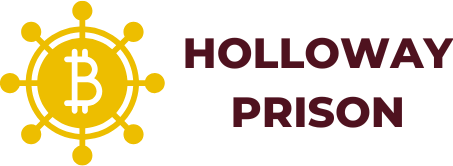Choosing the right software can feel like navigating a maze blindfolded while juggling flaming swords. With countless options out there, it’s easy to get overwhelmed. But fear not! This Software Selection Guide is here to help you cut through the confusion and make a decision that won’t leave you questioning your life choices.
Table of Contents
ToggleUnderstanding Software Selection
Making informed software decisions creates significant advantages for any organization. Understanding key aspects of software selection helps in identifying the best options available.
Importance of Choosing the Right Software
Choosing suitable software directly impacts operational efficiency. A well-selected solution can streamline processes, reduce costs, and enhance user satisfaction. Each software option offers unique features tailored to specific needs, making selection critical. Organizations benefit from evaluating software based on functionality, scalability, and support. Strong selections lead to improved productivity and a clearer competitive edge.
Common Challenges in Software Selection
Numerous challenges arise during software selection. Identifying specific requirements often proves difficult for many organizations. Budget constraints can limit options, complicating the decision-making process. Additionally, the vast array of software types creates confusion. Vendors frequently make compelling claims, making objective evaluation challenging. Resistance to change from employees can hinder the adoption of new software. Addressing these challenges ensures a smoother selection process and promotes organizational buy-in.
Key Features to Consider

Selecting the right software hinges on specific key features. These elements determine the software’s effectiveness and its alignment with organizational needs.
Functionality and Usability
Functionality plays a crucial role in software selection. Ensure the software meets essential requirements specific to the organization. Usability is equally important; the interface should be intuitive and user-friendly for seamless adoption. Look for features that enhance productivity and streamline workflows. Assess the solutions through trials, allowing users to experience practicality firsthand. Gathering feedback from potential users helps gauge how well the software meets their needs.
Scalability and Flexibility
Scalability is vital for accommodating future growth. Choose software that adapts to the organization’s evolving needs without a complete overhaul. Flexibility allows for customization, enabling users to tailor the software to unique workflows. Evaluate the options to determine if they can easily integrate with existing systems. Consider future technological advancements and how well the software can adapt to those changes. A solution that evolves alongside the business aids in long-term success.
Support and Maintenance
Effective support and maintenance are essential for any software. Look for vendors that provide comprehensive customer support, including training resources and troubleshooting assistance. Evaluate response times and availability of support channels to ensure prompt resolution of issues. Maintenance should be regular, keeping the software up-to-date and secure. Prioritize vendors that offer clear communication regarding updates and changes. This proactive approach minimizes disruptions and keeps operations running smoothly.
Evaluation Process
The evaluation process consists of several critical steps that collectively ensure a well-informed software selection. Clear understanding and systematic approaches pave the way for successful outcomes.
Defining Requirements
Identifying specific needs is the first step in software evaluation. Essential organizational requirements must be well documented. Employees should contribute to this process to enhance buy-in and ensure all perspectives are considered. It’s useful to prioritize these requirements based on their impact on operations and user satisfaction. Seeking input from various departments fosters a comprehensive understanding of functionalities needed. Gathering this information sets a strong foundation for the selection journey.
Researching Options
After defining requirements, exploring available software options comes next. Online research serves as a crucial tool in this phase. Utilizing software review sites can offer valuable insights into features and user experiences. Networking with industry peers often reveals additional recommendations. Compiling a shortlist of potential solutions enables easier comparison later in the process. Users can also consider vendor credibility and customer testimonials during this stage to gauge reliability.
Comparing Solutions
Comparing shortlisted software solutions involves a thorough analysis of each option’s features. Create a scoring system to evaluate functionality, scalability, and support more effectively. Workshops or demo sessions can provide practical insight into user interfaces and experience. Involving stakeholders in this comparison encourages collaborative decision-making. Ultimately, an objective assessment highlights the software that aligns best with organizational needs. Prioritizing this step ensures informed decision-making, leading to enhanced operational success.
Making the Final Decision
Making the final decision on software selection requires careful consideration and collaboration. Engaging key stakeholders enhances the selection process, ensuring multiple perspectives influence the outcome.
Involving Stakeholders
Involving stakeholders during the selection process is essential. Decision-makers should include representatives from various departments, as they provide diverse insights and highlight specific needs. Gathering input fosters a sense of ownership among team members, making it easier to implement the chosen solution. Facilitating discussions among stakeholders encourages transparency and helps identify potential challenges early in the process. Addressing concerns or resistance becomes easier with buy-in, leading to a smoother transition and greater acceptance of the new software.
Conducting Demos and Trials
Conducting demos and trials of shortlisted software significantly aids in making the final decision. Scheduling live demonstrations allows stakeholders to observe functionality in real-time and ask questions directly to vendors. Engaging in hands-on trials enables users to interact with the software, assessing usability and compatibility with existing processes. Gathering feedback during these sessions is invaluable, as it provides a clear picture of the software’s effectiveness in meeting organizational needs. A thorough evaluation based on these experiences aids in confidently selecting the best solution for the organization.
Selecting the right software is crucial for organizations aiming to enhance efficiency and streamline operations. By following a structured approach that includes defining requirements and engaging stakeholders, decision-makers can navigate the complexities of software options with confidence. Prioritizing functionality, scalability, and support ensures that the chosen solution not only meets current needs but also adapts to future growth. With careful evaluation and collaborative input, organizations can overcome common challenges and foster a sense of ownership among team members. The right software selection ultimately leads to improved performance and satisfaction across the board.





